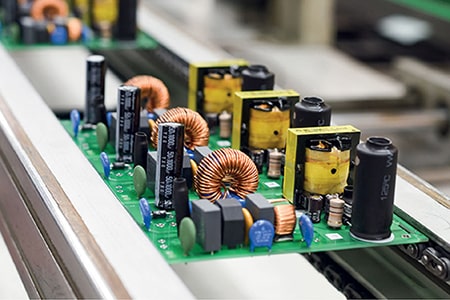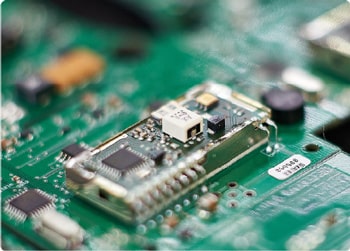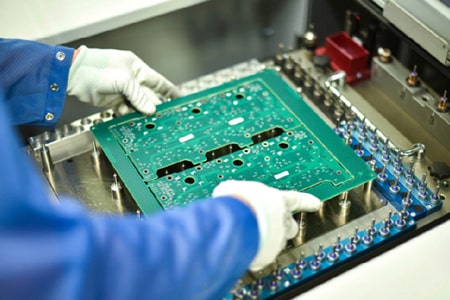A Complete Analysis of the Production Process for Small-Batch SMT Processing
The Differences Between Small-Batch SMT Processing and Large-Batch Production
Preparing for Small-Batch Processing
Before starting small-batch SMT processing, thorough preparation is crucial. This not only improves production efficiency but also reduces production issues and rework.
1. Design File Preparation:
Gerber Files: Ensure the Gerber files are correct and contain complete information for all layers, such as the board layout, drill holes, pads, and silkscreen.
BOM: Prepare a detailed BOM (Bill of Materials), listing all component models, package types, reference designs, and more.
Binding Diagram: Provide an accurate binning diagram showing the exact location of components on the PCB.
2. Component Procurement:
Component Selection: Select appropriate components based on the BOM, paying attention to package type and model consistency.
Component Procurement: When producing small batches, component procurement requires flexibility. Try to choose suppliers that can handle small batches to reduce costs and waste.
3. PCB Manufacturing:
Prototype Production: Before formal production begins, it is recommended to produce a small batch of prototypes to verify the feasibility of the design and identify potential issues.
PCB Material Selection: Choose a PCB material suitable for small-batch production, such as FR-4, to ensure consistent material quality.
Small-Batch Processing Process: The production process for small-batch SMT placement is similar to that of large-scale production, but with greater flexibility in equipment selection and process scheduling.

The main processes include:
1. Screen Printing:
Solder Paste Printing: Solder paste is applied to the pads on the PCB. This step requires high-precision printing equipment to ensure consistent solder paste thickness and placement.
Stencil Selection: Select an appropriate stencil. Stencils with a thickness of 0.12mm to 0.15mm are generally recommended for solder paste printing on small and micro components.
2. Component Placement:
Components are precisely placed on the PCB using an SMT placement machine. For small-batch production, desktop or medium- to low-speed SMT PCB placement machines are recommended, which are both cost-effective and meet production needs. Manual Placement: Manual placement can be used for some special or large-sized components, flexibly meeting varying production requirements.
3. Reflow Soldering:
Temperature Profile Control: During the reflow soldering process, temperature profile control is crucial to ensure that the solder paste is fully melted and does not damage the components. For small-batch production, a desktop reflow oven can be used, allowing for flexible temperature adjustment.
Lead-Free Process: Ensure the use of environmentally friendly lead-free solder paste and set the appropriate reflow temperature. The reflow temperature for lead-free solder paste is typically 30-40°C higher than that for lead-based solder paste.
4. Quality Inspection:
Visual Inspection and AOI: After production is complete, manual visual inspection and automated optical inspection (AOI) are performed to check solder joint quality, particularly for issues such as solder bridges, leaks, or cold solder joints.
Functional Testing: Functional testing is performed on the assembled PCB to ensure that all components are functioning properly. Any issues found are promptly repaired.
Quality Control for Small-Batch Processing: Quality control is particularly important for small-batch production, as it impacts the overall yield and customer satisfaction. We recommend implementing quality control measures in the following areas:
1. First-Part Confirmation: Before formal production begins, thoroughly inspect and confirm the first part to ensure it meets design and quality requirements.
2. Process Control: During the production process, strictly control the operating specifications of each step, especially the quality of solder paste printing, placement, and reflow soldering.
3. Product Traceability: Establish a comprehensive product traceability system to record the production process and test results of each product, facilitating subsequent analysis and improvement of quality issues.
Small-Batch PCBA Processing Optimization Strategies
To improve the efficiency and quality of small-batch SMT placement processing, the following optimization strategies are available:
1. Rational Production Scheduling: Plan production based on order quantity and delivery date to avoid frequent equipment adjustments and switchovers, thereby improving production efficiency.
2. Multi-Product Co-Production: For small-batch production of multiple products, consider co-production to optimize equipment utilization and reduce changeover time.
3. Increased Automation: Appropriately increase the level of automation in the production process to reduce manual intervention and lower the error rate.
4. Supply Chain Management: Strengthening component and PCB supply chain management ensures timely material delivery and reduces wait times.
Through rational pre-production preparation, flexible equipment selection, strict quality control, and optimized production strategies, manufacturers can improve production efficiency while ensuring product quality, meeting market demand for small-batch customized products. This helps companies enhance their competitiveness and gain an advantage in a rapidly changing market.
If you have project requirements, you can contact us and we will provide detailed analysis to help you achieve new results.







